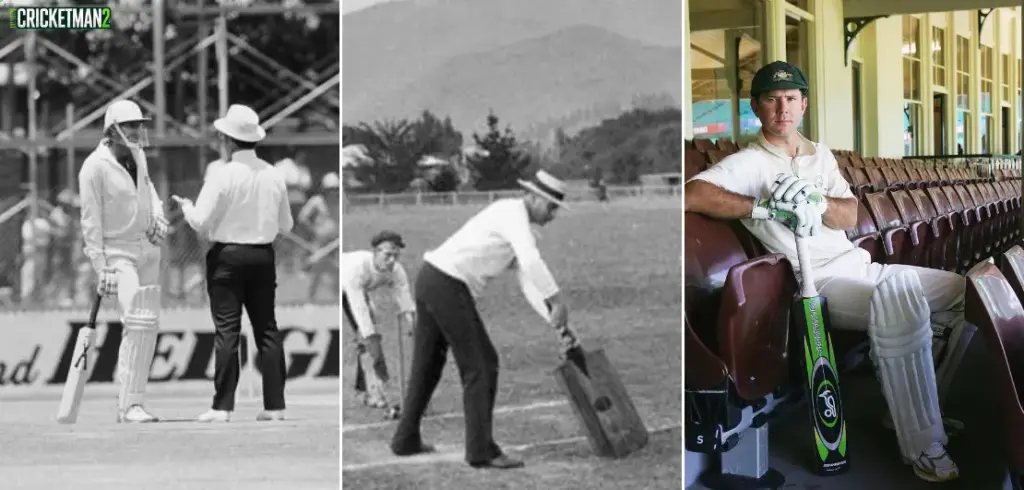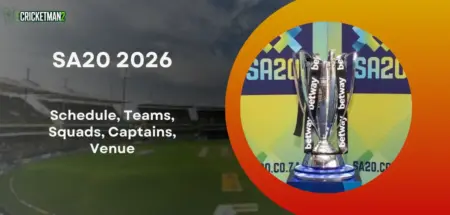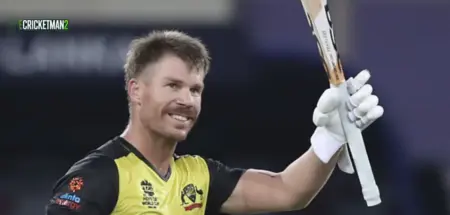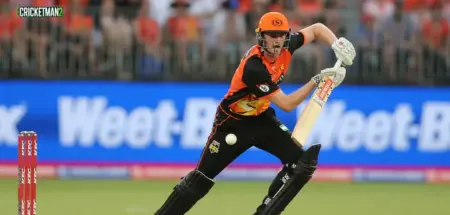Cricket is often seen as a gentleman’s game, but over the years, it has not been free from controversy. Interestingly, not just players or umpiring decisions, even cricket bats have sparked heated debates. From oversized blades to unusual materials and flashy designs, several bats challenged the laws of cricket and forced authorities to make stricter rules.
Here’s a detailed look at the most controversial bats in cricket history, the players behind them, and their lasting impact on the sport.
Most Controversial Bats in Cricket – Overview
| Bat Name | Reason for Controversy | Last Used By |
|---|---|---|
| Monster Bat (1771) | Too wide, covered all stumps | Thomas White |
| Aluminium Bat (1979) | Damaged the ball | Dennis Lillee |
| Carbon Graphite Bat (2006) | Extra power from graphite strip | Ricky Ponting |
| Mongoose Bat (2010) | Odd design, short blade, long handle | Matthew Hayden |
| Black Bat (2016) | Changed color of the ball | Andre Russell |
| Golden Bat (2015) | Concerns of metal in design | Chris Gayle |
| Painted Bats (2015) | Marketing gimmick, hiding willow flaws | Multiple players |
Read Also:- Most Handsome Cricketers in the World 2025
Thomas White’s Monster Bat (1771)
In 1771, English cricketer Thomas White used a bat so wide that it covered all three stumps. This unusual move during a Chertsey vs Hambleton game made bowlers helpless. Protests by Hambleton players led to a rule limiting bat width to 4.25 inches, which is still followed today.
Dennis Lillee’s Aluminium Bat (1979)
Australian pacer Dennis Lillee shocked fans during the Ashes in 1979 by using an aluminum bat called The ComBat. England captain Mike Brearley complained that it was damaging the ball. Even his own skipper, Greg Chappell, intervened to replace it with a wooden bat. Lillee angrily threw the aluminum bat away, but the controversy resulted in a ban on metal bats in cricket.
Ricky Ponting’s Carbon Graphite Bat (2006)
Australian legend Ricky Ponting once used a bat with a thin carbon graphite strip at the back. He even scored a double century with it against Pakistan. However, the MCC argued that the strip gave extra power, which was unfair. The ICC banned this bat along with other Kookaburra models like the Beast and Genesis Hurricane.
Matthew Hayden’s Mongoose Bat (2010)
During IPL 2010, Australian opener Matthew Hayden introduced the Mongoose bat, which had a long handle and a shorter blade. It offered a huge hitting surface, and Hayden used it to score 93 off 43 balls against Delhi Daredevils. However, it lacked defensive strength, and players soon abandoned it. Though not banned, it faded away quickly.
Andre Russell’s Black Bat (2016)
West Indies star Andre Russell carried a shiny black Spartan bat during a BBL 2016-17 match. Fans loved its unique look, but umpires noticed that it left black marks on the ball. Cricket Australia banned the bat within 24 hours, citing concerns over ball visibility and fairness.
Chris Gayle’s Golden Bat (2015)
The “Universe Boss” Chris Gayle grabbed headlines in the Big Bash League 2015 with a golden-colored bat designed by Spartan. Speculations arose that it contained metal, but the manufacturer clarified that it was just a special paint. Though it didn’t break ICC rules, the golden bat was seen as more of a marketing gimmick than innovation.
Painted Cricket Bats (2015)
Many bat makers started painting bats to hide poor-quality willow. Even top players sometimes used them for publicity. The controversy deepened when painted bats were linked to visibility issues during matches. This highlighted how commercial strategies sometimes clashed with cricket’s traditions.
Read Also:- Most Viewed Cricket Matches in the World
ICC Bat Regulations in Cricket – Final Word
To prevent unfair advantages, ICC set strict rules for bat dimensions and materials:
| Parameter | Maximum (inches) | Maximum (cm) |
|---|---|---|
| Width | 4.25” | 10.8 cm |
| Length | 38” | 96.5 cm |
| Depth | 2.64” (middle), 1.56” (edge) | 6.7 cm (middle), 4 cm (edge) |
| Covering | 0.043” | 0.11 cm |
Other rules:
- Bat must be made of wood.
- Handle from cane/wood only.
- Protective covering must be thin and non-damaging.
Conclusion
From Thomas White’s Monster Bat in the 18th century to Andre Russell’s Black Bat and Chris Gayle’s Golden Bat in modern cricket, the game has seen equipment innovations that stirred debates. Some were banned for being unfair, while others faded away naturally.
Today, strict ICC bat regulations ensure fair play, but these controversies remain memorable chapters in cricket history.




